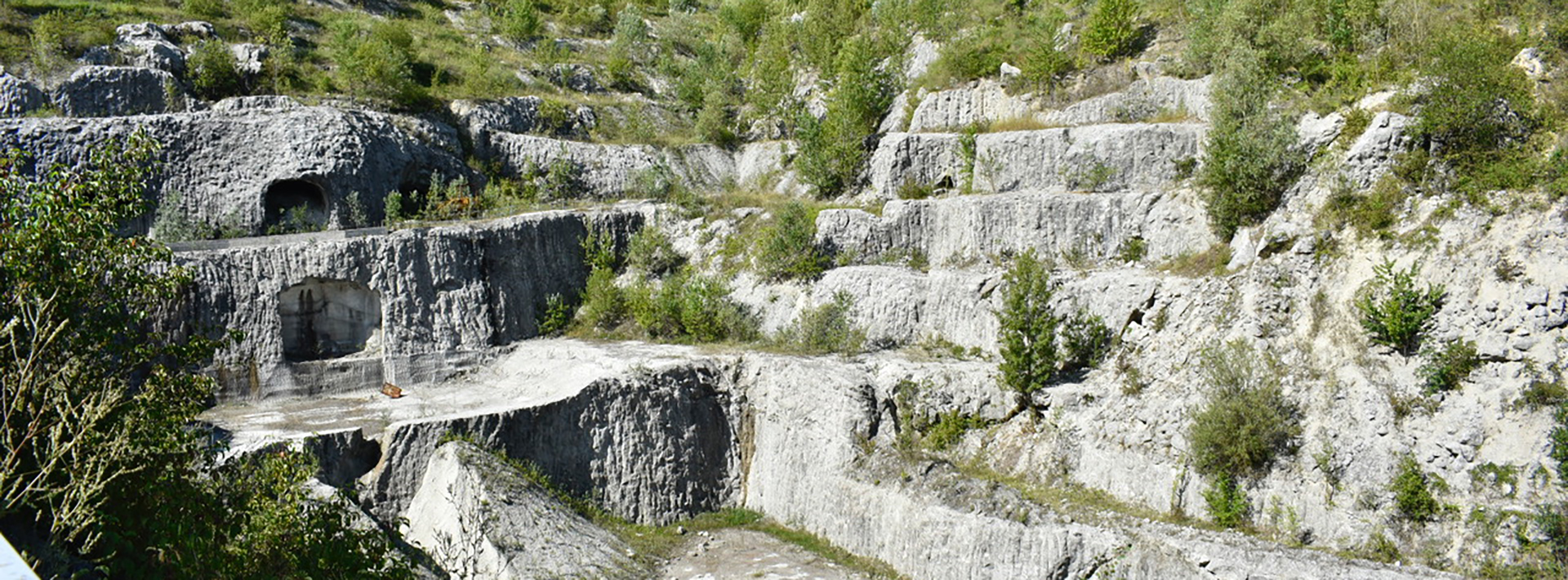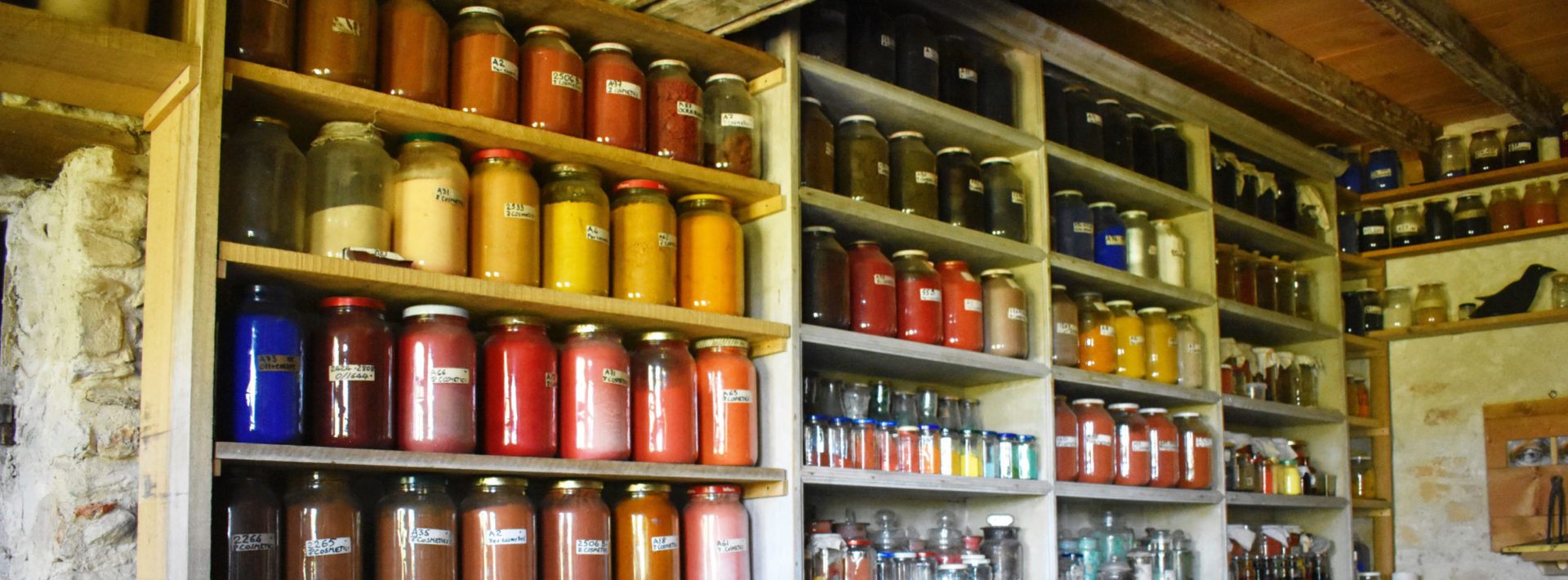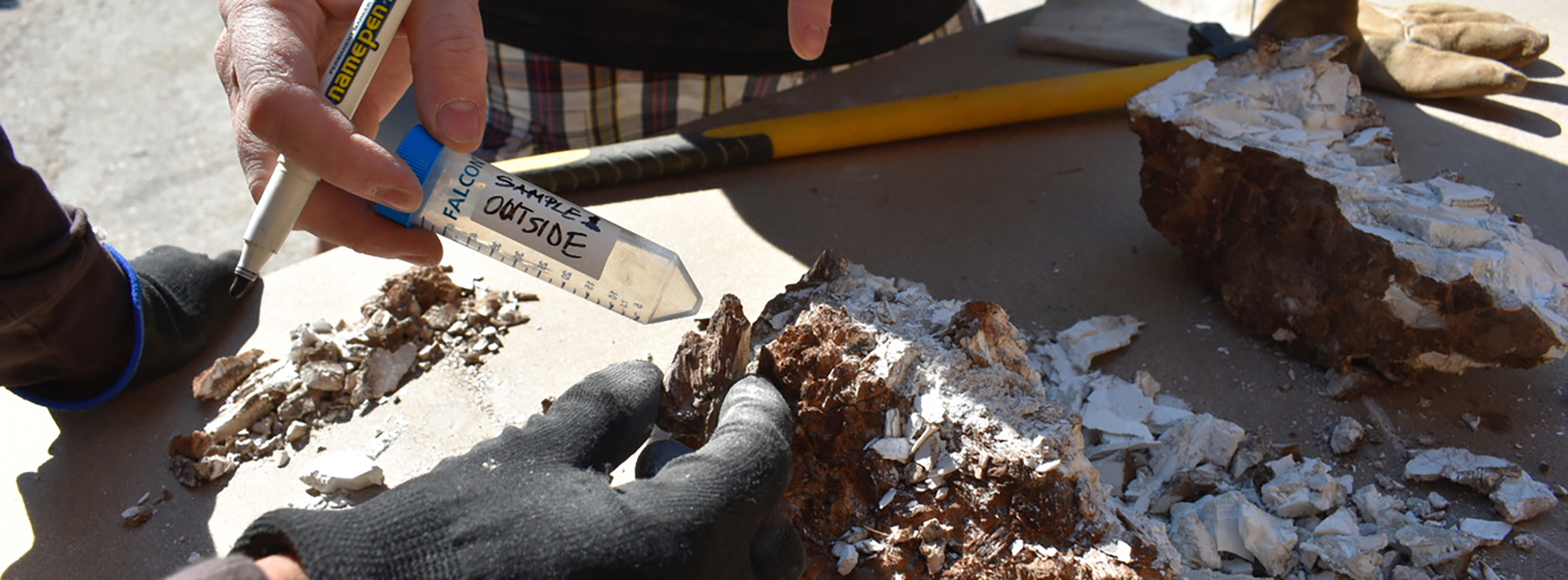ONE-MA3 2017: Not the Right Kind of Blue

[fusion_text]By Sierra Rosenzweig
The ONE-MA3 team had been excitedly waiting for our Egyptian blue to finish cooking and today we were finally able to take our mixtures out of the furnace and see the change in color. All of the batches that we made had turned from white to blue, but some of the blues were brighter, and some glassier than others, so we knew they couldn’t all be the true Egyptian blue. To figure out which batches were actually Egyptian blue, we used a special camera filter and illuminated our blues with LEDs. As it turned out, the glassier blues did not glow in our photo, revealing that they were not the actual Egyptian blue.

The Egyptian blue batches are glowing in the photograph, while the other blues appear dark
The group was then assigned the task of making our own gypsum sculptures. However, we were informed that we were not allowed to simply buy gypsum, we had to find it on our own and cook it, so we headed down to the query in search. After exploring the area around the query and appreciating the view of the pool below, we hauled gypsum boulders back to town in the van. The gypsum was put in a brick oven and left to cook overnight so it would be made into a workable material by the next day.

Exploring around the gypsum query
While we had our brick oven hot, we decided to put it to full use and cook our own pizzas! With the help of the friendly Italians in Aramengo, we each crafted our own pizza and ended the night by eating our delicious snack.

A homemade cheese pizza before it was put in the brick oven to cook.
This summer, Professor Admir Masic is leading a program on Materials in Art, Archaeology and Architecture (ONE-MA3), in which MIT undergraduates are conducting three weeks of fieldwork in Privernum, Pompeii and Turin as a prerequisite for the Fall 2017 MIT course, 1.057 Heritage Science and Technology. The program involves real-world analysis of ancient infrastructures and materials and focus on teaching ways to improve sustainability of the future through the study of ancient successes. [/fusion_text]



